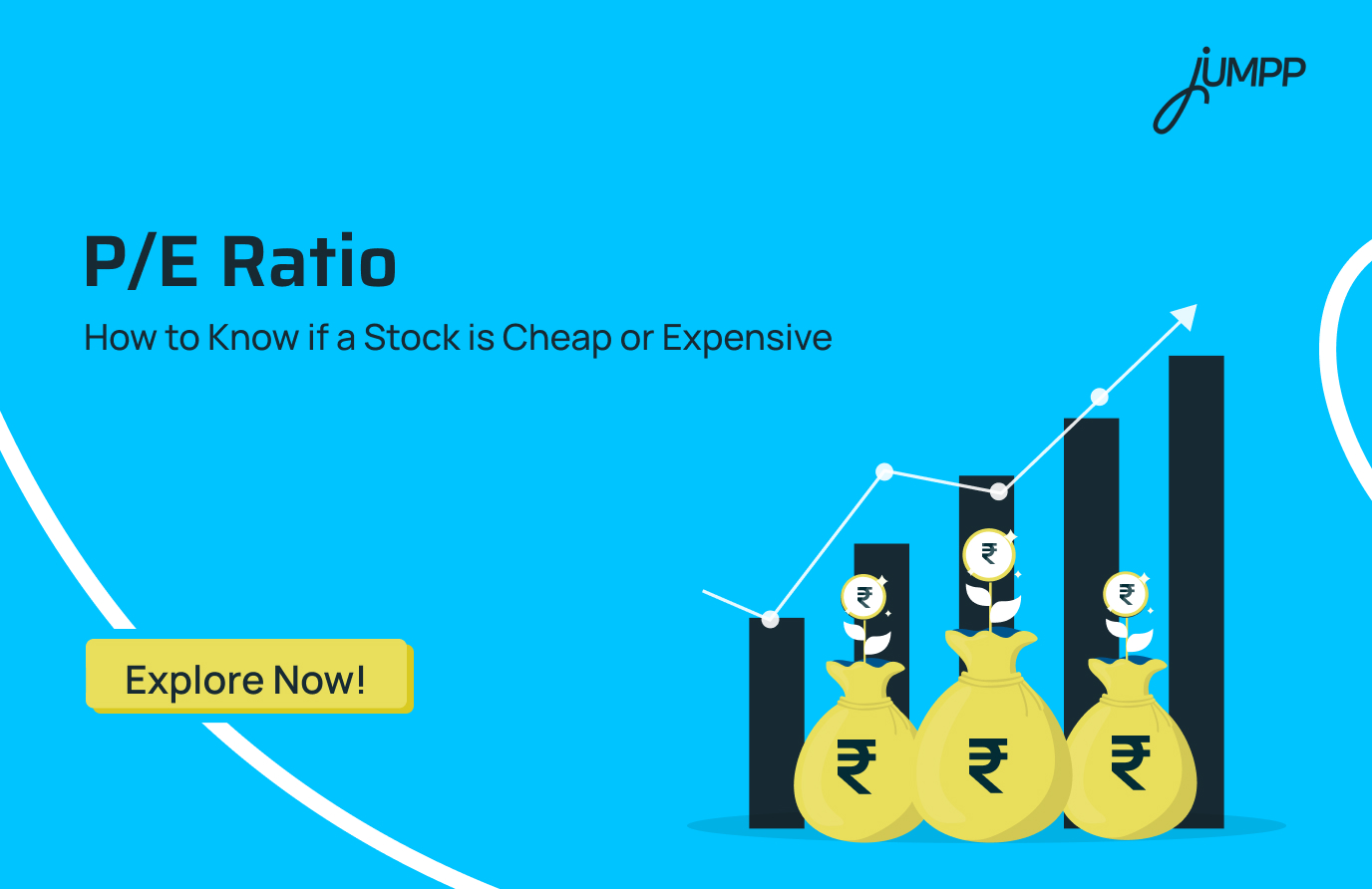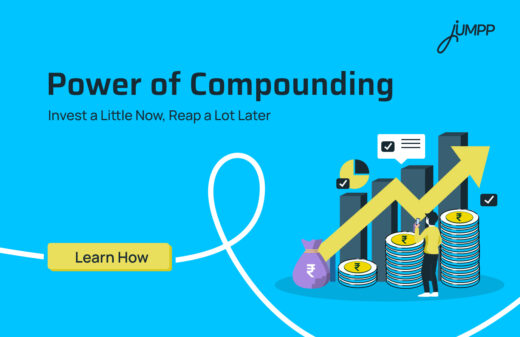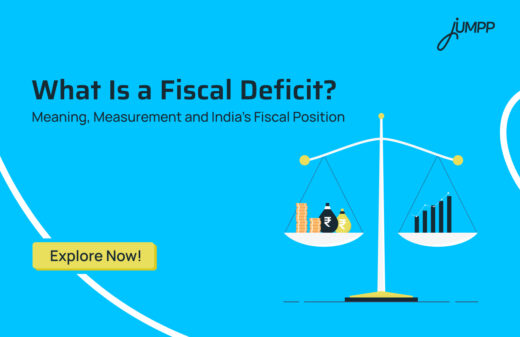What is the P/E Ratio and Why Every Investor Must Understand It

If one café charges ₹100 for a coffee and another charges ₹200 for the same cup, you would want to know what explains the difference. Is it the quality of beans, the ambience, or simply branding? Stocks are not very different. When you buy a share, you pay a price for the company’s ability to generate profits. The P/E ratio, or Price-to-Earnings ratio, helps you understand whether you are paying too much or too little for those profits. It is simply the relationship between a company’s price and its earnings.
Let us learn what is PE ratio and how you actually use it in making decisions.
What is the P/E Ratio in the Share Market?
The P/E ratio in the share market is an important valuation tool. It gives you an idea of whether a stock is overvalued, undervalued, or fairly valued based on its current price compared to its earnings.
What is the High P/E Ratio?
It suggests that investors expect strong growth in the future and are ready to pay a premium for the stock. This is often seen in high-growth industries such as technology. However, it could also mean the stock is overpriced.
What is the Low P/E Ratio?
This indicates that the stock may be undervalued, potentially presenting a bargain opportunity. At the same time, it can also signal low growth expectations. Low P/E ratios are often found in mature sectors like utilities.
How to Calculate the P/E Ratio
For calculating the P/E ratio, you need to use this PE Ratio formula–
P/E Ratio Formula = Current Market Price per Share/ Earnings per Share (EPS)
Here in
- Current Market Price per Share refers to the price at which a single share of the company is trading in the stock market at that moment.
- Earnings per Share (EPS) represents the portion of a company’s profit allocated to each outstanding share of common stock. It tells you how much money the company is making for every share held by investors.
By dividing the market price by EPS, the P/E ratio reveals how many rupees investors are willing to pay today for every rupee the company earns.
What are the Types of Price to Earnings Ratios?
There are two primary types that investors use to evaluate stocks:
- Trailing P/E Ratio
- Forward P/E Ratio
The trailing P/E Ratio looks at a company’s actual historical earnings, usually over the last 12 months. It provides a picture of how the company has performed and is particularly reliable for companies with stable, consistent earnings.
The forward P/E Ratio is based on projected future earnings, often estimated by analysts or company management. It gives insight into potential growth and is more relevant for high-growth companies or those undergoing major transformations.
Types of PE Ratio in Share Market- Key Differences and Uses
- Historical vs Future Perspective: Trailing P/E shows what has already happened, while Forward P/E focuses on what might happen.
- Reliability: Trailing P/E is more data-driven and objective; Forward P/E depends on forecasts, which can be uncertain or optimistic.
- Investor Preference: Growth-oriented investors often prefer Forward P/E to capture future potential, while conservative investors rely on Trailing P/E for its stability.
Investment app with an intuitive dashboard- Invest in mutual funds and stocks with a single, seamless platform.
What is a Good P/E Ratio?
A “good” P/E ratio is never definitive.
Generally, a low P/E ratio below 15 can suggest that a stock is undervalued, especially if the company has strong fundamentals. It means investors are paying less for each rupee of earnings.
When evaluating P/E ratios, it is crucial to compare them with:
- Industry averages: Tech companies often have higher P/E ratios than mature sectors like utilities.
- Competitors: Compare a company’s P/E with peers of similar growth and size to see if it is trading at a discount.
- Historical P/E: Looking at a company’s own past P/E ratios helps identify whether the current valuation is high, low, or in line with historical trends.
Once you identify undervalued stocks using the P/E ratio, the next step is to grow your returns over time. Learn how a Dividend Reinvestment Plan (DRIP) can help you compound your wealth effortlessly.
What is a Bad P/E Ratio?
A high P/E ratio can indicate overvaluation. This basically suggests that investors may be paying too much for current earnings. If the company fails to grow at the expected pace, the stock may face price corrections.
A negative P/E ratio occurs when a company reports losses. While it often signals financial distress, in startups or fast-growing sectors like technology and biotech, a negative P/E can simply reflect heavy investments in future growth rather than immediate profitability.
What are the Limitations of the P/E Ratio?
While the P/E ratio is a widely used tool, it has several limitations:
- It ignores debt levels: Two companies with similar P/E ratios can have very different risk profiles if one carries significant debt.
- It doesn’t measure growth: P/E alone does not reflect earnings growth; the PEG ratio can provide additional insight.
- P/E ratio is affected by one-time events: Extraordinary gains or losses can temporarily distort earnings, making P/E less reliable.
- These are not comparable across industries: Different sectors have inherently different average P/E ratios.
- It is not really useful for unprofitable companies: Negative earnings make P/E meaningless.
- Susceptible to manipulation: Earnings can be adjusted through accounting practices, which may distort the ratio.
In short, the P/E ratio is a useful starting point but should always be considered alongside other metrics and a thorough understanding of the company and its sector.
What is Absolute P/E Ratio vs. Relative P/E Ratio?
A common question among investors is: What is the difference between absolute P/E ratio vs. relative P/E ratio?
- Absolute P/E Ratio: The standard calculation for a company at one point in time. It gives an overview of valuation but lacks context.
- Relative P/E Ratio: Compares the company’s P/E with benchmarks — such as industry peers, a market index like the Nifty 50, or even the company’s own historical average. It provides much better context to decide if a stock is trading at a discount or a premium.
Key Considerations When Using P/E
While the P/E ratio is useful, there are important things that you should keep in mind-
- Context is Crucial: A P/E ratio alone cannot tell the full story. Comparing it to other companies in the same sector or to the company’s historical P/E provides more meaningful insights.
- Not the Only Metric: The P/E ratio should be one of several tools in an investor’s toolkit. Complementing it with metrics like Price-to-Sales and debt ratios gives a fuller picture.
- Forward P/E: Some investors rely on forward P/E, which uses projected earnings instead of historical earnings. This helps measure expected performance, but accuracy depends on reliable earnings forecasts.
In short, the P/E ratio is a compass for investors — it points you in the right direction, but it does not replace a deeper understanding of the company and its market.
Final Thoughts
The P/E ratio in the share market is one of the simplest yet most powerful tools in investing. By understanding what PE ratio is, learning the P/E ratio formula, and exploring different types of price-to-earnings ratios, you can now start making smarter investment decisions.
P/E Ratio- FAQs
A good P/E ratio depends on the industry and growth prospects. Generally, 15–25 is seen as fair for many companies, but context matters.
A high P/E means investors expect strong future growth, but it can also signal that the stock is overpriced.
There is no universal “bad” P/E, but very low ratios may suggest weak growth, while very high ones could mean overvaluation.
As of Oct 7th, 2025, Tata Motors has a P/E ratio of 12.1.
It shows how much investors are willing to pay for each rupee of a company’s earnings, indicating if a stock looks cheap or expensive.
A P/E of 5 may indicate undervaluation, but it could also mean the market has very low growth expectations for that company.
PE stands for Price-to-Earnings ratio, a stock market metric comparing share price to earnings per share (EPS).
Source– https://www.screener.in/






